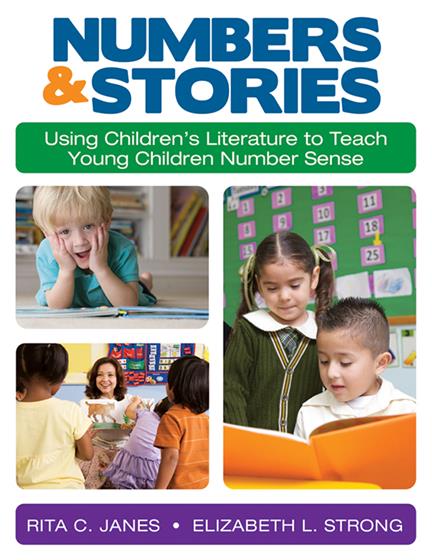Preface
Acknowledgments
Publisher's Acknowledgments
About the Authors
I. Here's the Story: Fundamental Components for Developing Number Sense Using Children's Literature
1. The Young Child and Mathematics
Why Mathematics for Young Children?
Learning Mathematics in the Early Years
2. The Learning Environment
Features of the Learning Environment
Summary
3. Why Integrate Children's Literature and Mathematics?
Children's Literature and Learning Mathematics
Reasons for Integrating Children's Literature and Mathematics
Summary
4. Essential Features of the Investigations
Design of Investigations
The Context
Important Mathematics
Supporting Children's Learning
Summary
5. Design of the Investigations
Stages of Investigations
The Six Stages
Summary
II. Children's Literature and Number Sense Investigations
Unit 1: Counting and Cardinality
Cardinal Numbers One to Ten - The Water Hole (Graeme Base)
Subitizing - Olly and Me: 1 2 3 (Shirley Hughes)
Counting On - Mouse Count (Ellen Stoll Walsh)
Counting to Find How Many - How Many Snails? A Counting Book (Paul Giganti Jr.)
Counting Backwards - Ten Little Fish (Audrey Wood)
Unit 2: Whole Number and Operations Relationships
Comparing Quantities and Numbers - One Big Building: A Counting Book About Construction (Michael Dahl)
Comparing Numbers - How Many Snails? A Counting Book (Paul Giganti Jr.)
Numbers That Make 10 - Ten Flashing Fireflies (Philemon Sturges)
Odd and Even Numbers - 365 Penguins (Jean-Luc Fromental)
Skip Counting by 2s, 5s, and 10s - Two Ways to Count to Ten: A Liberian Folktale (Ruby Dee)
Doubling Numbers - Minnie's Diner: A Multiplying Menu (Dayle Ann Conrad)
Equal Groups - How Do You Count a Dozen Ducklings? (Sean Chae)
Unit 3: Operations and Algebraic Thinking
Equality and Equations - Balancing Act (Ellen Stoll Walsh) and Equal Shmequal (Virginia Kroll)
Decomposing Numbers/Word Problems - Quack and Count (Keith Baker)
Add Within 20 - The Tub People (Pam Conrad)
Subtraction Within 20/Word Problems - What's the Difference? An Endangered Animal Subtraction Story (Suzanne Slade)
Add Two or More Addends - The Twelve Days of Summer (Jan Andrews)
Unit 4: Operations Within 100 and Place Value
Representing Numbers to 100/Addition and Subtraction - One is a Snail, Ten Is a Crab: A Counting by Feet Book (April Pulley Sayre & Jeff Sayre)
Addition and Subtraction Within 100/Word Problems - The Centipede's 100 Shoes (Tony Ross)
Numbers 10 to 19/Place Value - Let's Count (Tana Hoban)
Numbers 20 to 100/Place Value - Let's Count (Tana Hoban)
Appendices
Appendix A (1-4) - Unit 1: Counting and Cardinality
Appendix B (1-12) - Unit 2: Whole Number and Operations Relationships
Appendix C (1-5) - Unit 3: Operations and Algebraic Thinking
Appendix D (1-8) - Unit 4: Operations Within 100/Place Value
Appendix E (1-2) - Duplicated Appendices
Appendix F - Learning Expectations Correlation Chart
References
Bibliography of Children's Literature for the Investigations
Index




